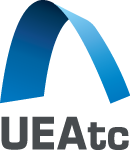 In 1960, a number of bodies from different countries granting fitness for purpose declarations agreed to cooperate, trying to reduce the burden for manufacturers seeking such declarations in several countries. Over time, other such bodies joined the organization to arrive at the European Union for technical approval in construction (UEAtc) that we know today, comprising seventeen member institutes from across the EEA. UEAtc:
In 1960, a number of bodies from different countries granting fitness for purpose declarations agreed to cooperate, trying to reduce the burden for manufacturers seeking such declarations in several countries. Over time, other such bodies joined the organization to arrive at the European Union for technical approval in construction (UEAtc) that we know today, comprising seventeen member institutes from across the EEA. UEAtc:
– brings together at European level the scientific and practical know how of the members on construction in general and on national construction practices in particular,
– practices reciprocal recognition of approvals through confirmations which adapt the original approval to the various national requirements,
– offers to manufacturers a collective service through common approval guidelines and confirmations.
Technical Approvals include the appropriate indications for correct use, design and installation, comprising reference to the applicable national regulatory provisions as well as to current national practices.
It is interesting to note that UEAtc members follow the core principles of standardization[1] and abide by the WTO Code of good practice for the preparation, adoption and application of standards[2] when issuing technical fitness for purpose declarations, with the exception that applications for such declarations and the corresponding assessment are treated confidentially (UEAtc members’ work programs are not being made available), that they are issued for identified products and therefore usually contain a clear description thereof (they do not primarily contain performance based requirements) and there is no notification procedure before publication of fitness for purpose declarations.
UEAtc member bodies are bodies pursuing an aim of general interest to the construction sector, with the objective of complementing standardization of products, kits and systems. The individual members operate at the national level, with or without a suitable mandate of the governments, in full independence and impartiality, on a non-profit-distributing and non-competitive basis. UEAtc’s main objectives are to contribute to the competitiveness, quality, safety and environmental performance of the construction sector and to the overall sustainability of the built environment, by ensuring acceptance of products, kits and systems on UEAtc members’ national markets. Although its status and content may have changed over time and may be different from one member to another, the declaration of fitness for purpose continues to be UEAtc members’ main activity, which distinguishes members and therefore also UEAtc from any other organization.
Since their objectives are aimed at responding to national needs, competition between member bodies from different countries does not exist. The lack of competition permits UEAtc members to exchange information in an unrestricted way and to support each other delivering the best possible technical judgments. Information is exchanged on a voluntary basis and, where relevant, after consent of the concerned manufacturer(s).
In order to issue authoritative statements supporting the general interest of the construction sector, UEAtc member bodies need to be able to take into account the views of all its stakeholders. This may be because they are a public service or act under a mandate of a public service, because their structure contains representation of all stakeholders or because they belong to a network comprising all stakeholders. Since UEAtc itself does not issue technical fitness for purpose declarations, there is no direct need for collaboration with European organizations of stakeholders, but it is important that such organizations know and support UEAtc activities.
Whereas approvals services are the core business of UEAtc members, they may have one or several other activities linked to those services. UEAtc’s “raison d’être” is technical fitness for purpose declarations, but UEAtc may also be a platform allowing (some of) its members to develop collaboration on a bi- or multilateral level for other activities.
UEAtc member bodies issue few declarations for really innovative products, kits and systems. The ability of offering a route from research and development, taking into account protection of intellectual property, towards technical fitness for purpose declarations that accompany their launching on the market may be an important asset for members. Whereas research is not an objective in itself for UEAtc, UEAtc members benefit from research when issuing fitness for purpose declarations. UEAtc maintains a close liaison with European organizations for which research is a core activity.
